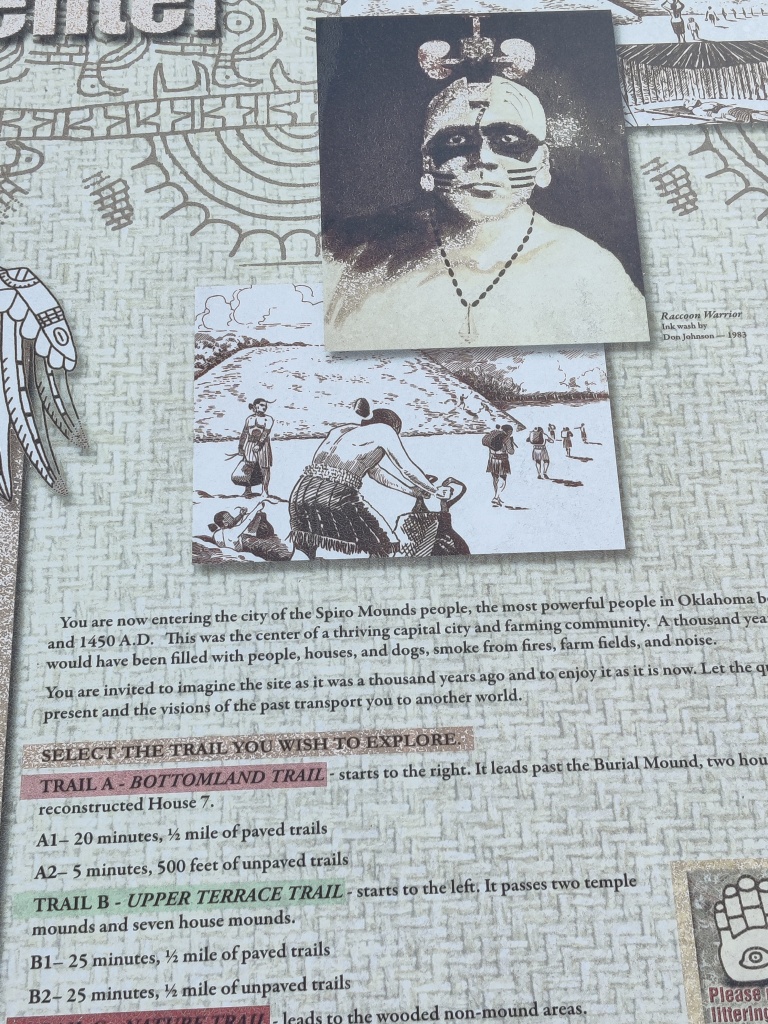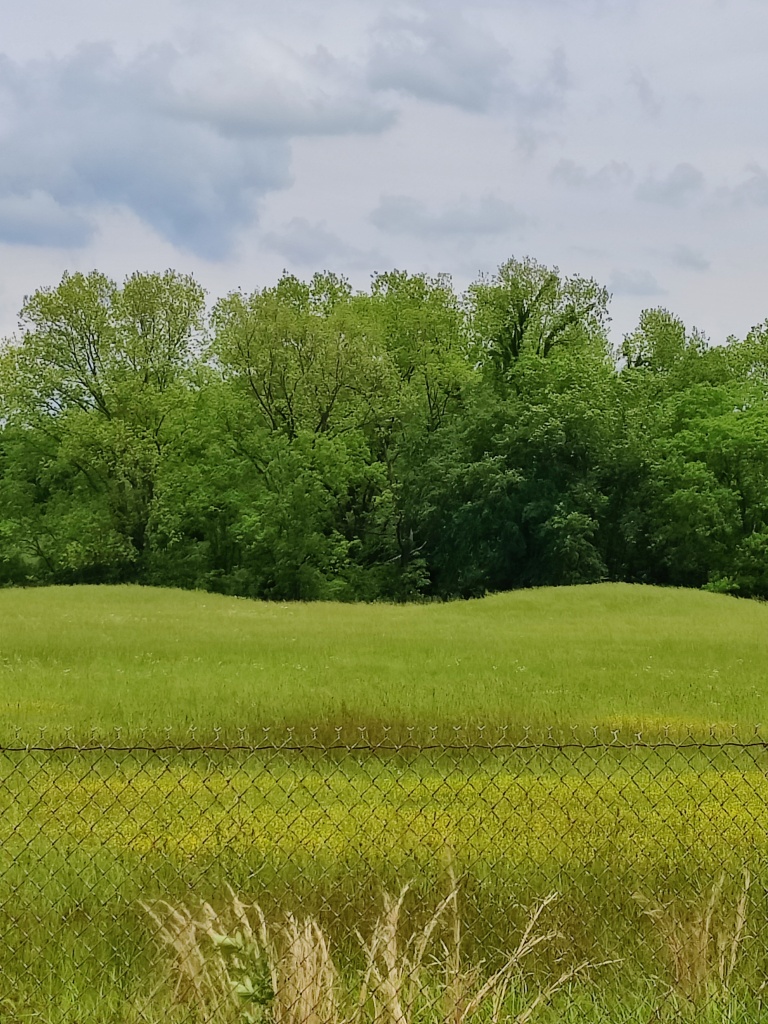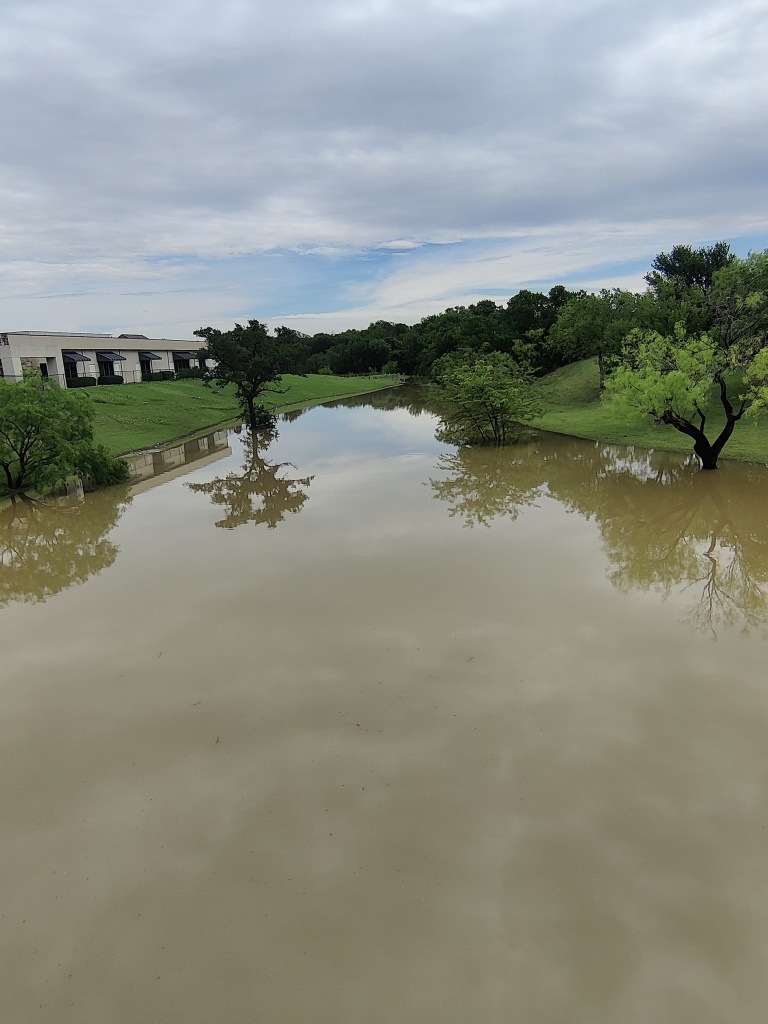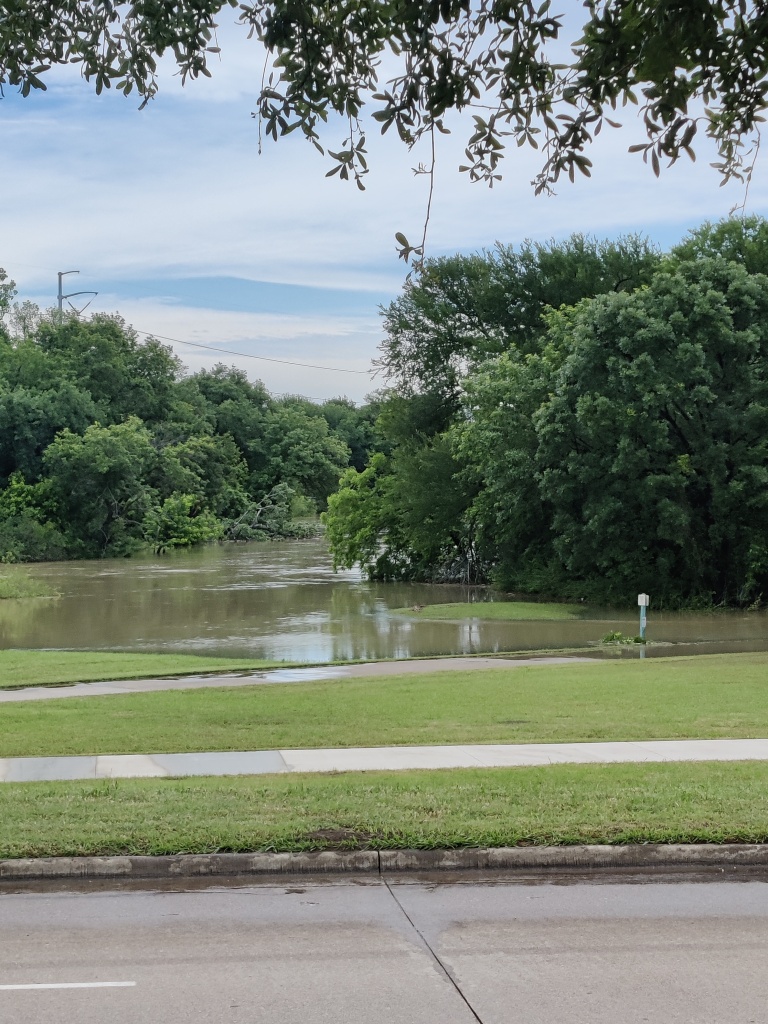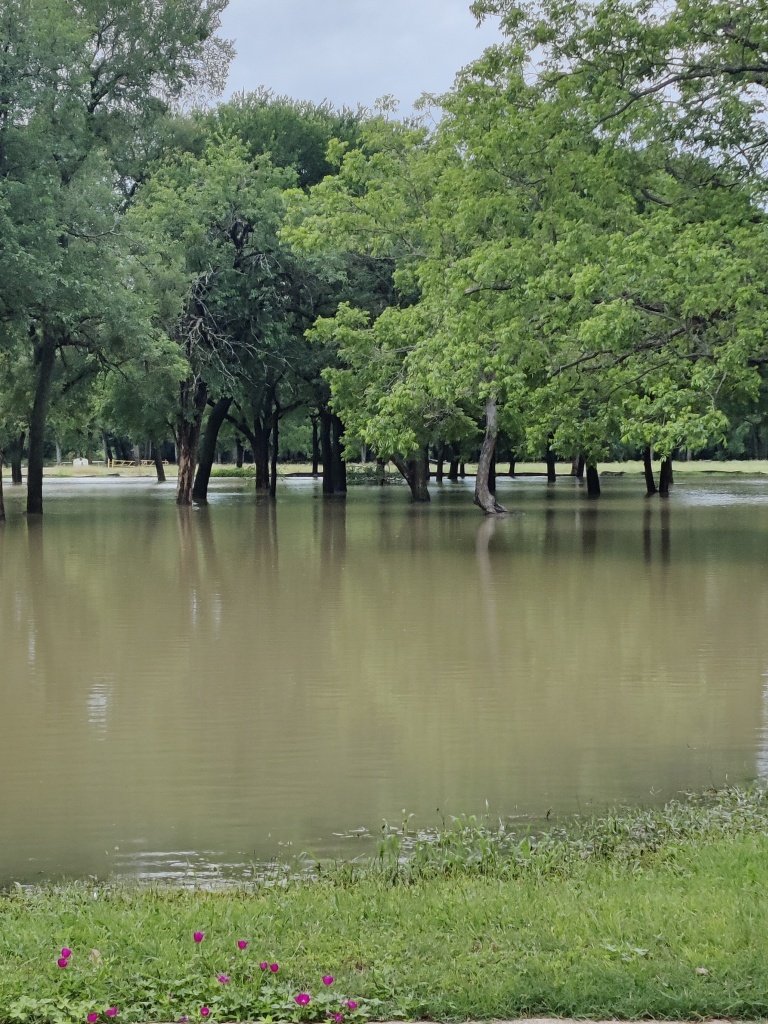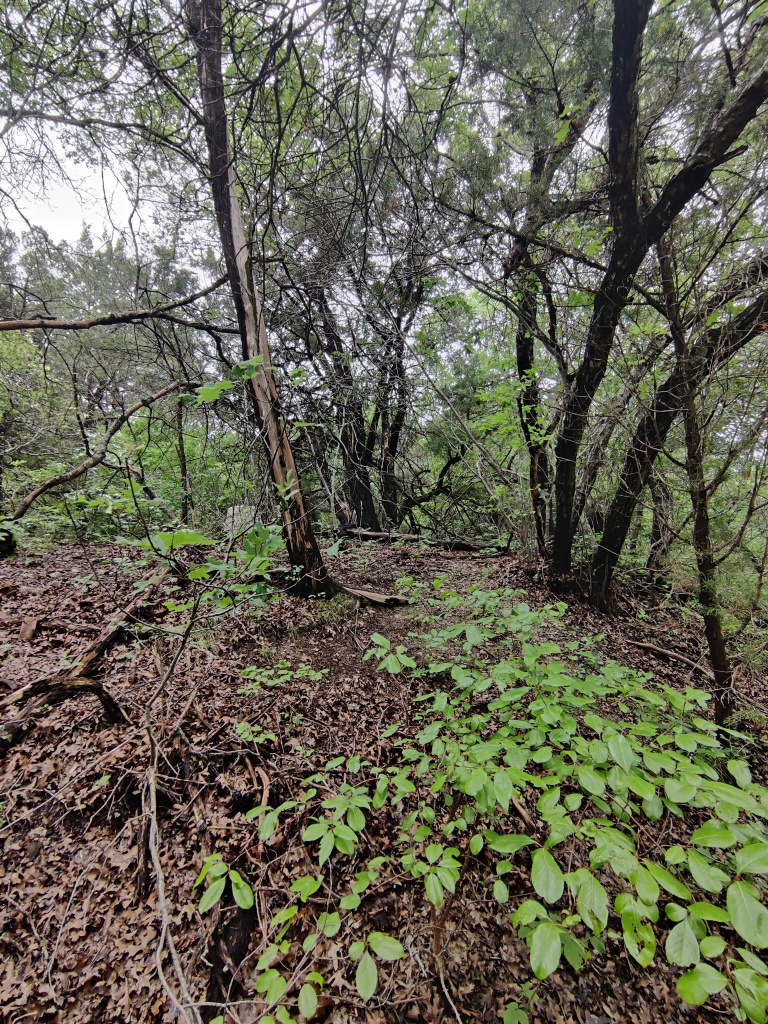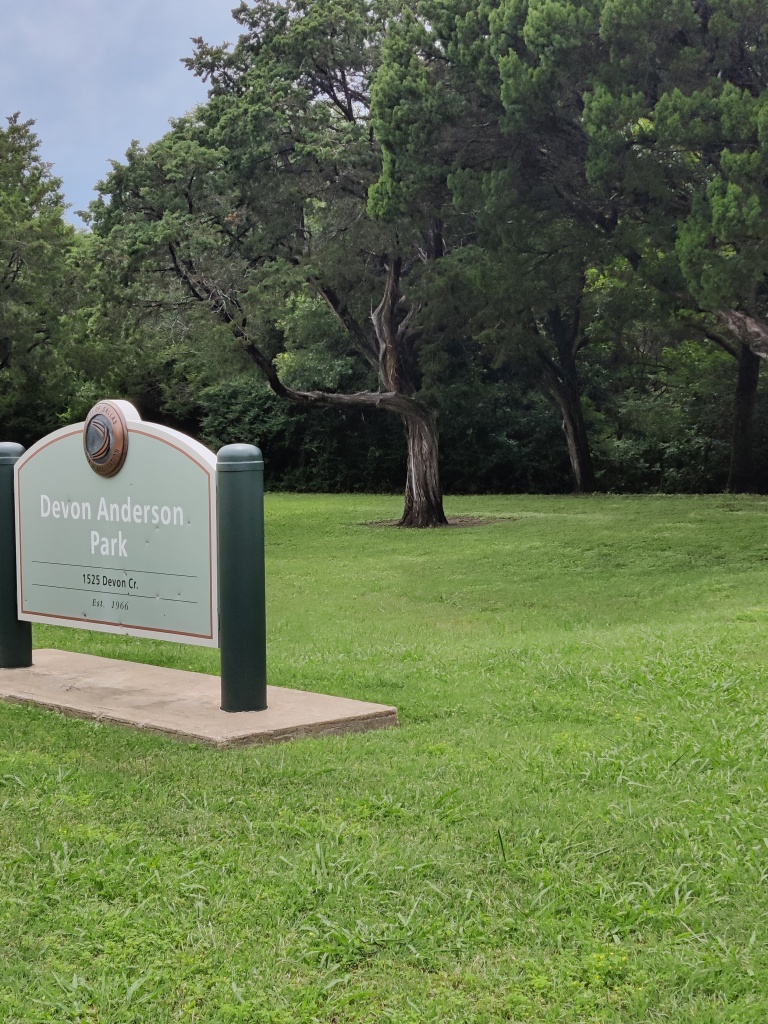So, what do you do when you’re driving in search of history? In Texas, where there is mesquite, llano, sand dunes, beaches, sea walls and Glen Campbell songs, mesquite, llano, sand, places of great battles and the extermination of Indian people, mesquite, llano, sand.
It’s a lot to drive when you’re on a road trip seeking history. Listening to a top 40 playlist from Spotify can only take you so far before even Lucius and Sara Bareilles start to sound like country songs, with you trying to sing in a soprano twang with your tenor voice. Trust me when I say, that isn’t pretty.
Best to find a good audiobook. And a hotel with a firm bed.
See? Everything turns into a country song.
Cormoran Strikes a Chord
My music playlists lost their luster right around Carrizo Springs. Well, to be truthful, more like on my way to Freeport and Galveston where I began to listen to my stock of audiobooks, in my case, Audible.com.
I’d always wanted to read “A Cuckoo’s Calling” written by J.K. Rowling but which she wrote under a male pseudonym, Robert Galbraith. The novel generated a series of crime novels for the man character, Cormoran Strike, a burly former British soldier who lost part of a leg in Afghanistan and is just about to run out of luck, time, and money when he lands a case from a rich British lawyer for the murder of his famous sister, an adopted Anglo-African model whom most people believed she’d committed suicide.
No, I won’t spoil the ending. Suffice to say, it started raining in Irving, Texas on my way to Freeport. Listening to a good whodunnit got me through the drenching, an apparent record rainstorm that soaked the Gulf Coast from Lake Charles, Louisiana to, you guessed it, Freeport, Texas and on the way to Corpus Christi via Victoria and Goliad–that’s where the whole extermination of Texas Indians and great battles got in the way of the sanddunes, llano, and mesquite.
There’s something sublime about hearing the exploits of some British war veteran and his intrepid female temp secretary-turned-junior-sleuth, Robin in between stopping and seeing the sights of Comanche raids, Spanish friars ministering to Carancahua “heathens” and Mexican massacres of Texas Republicans (those that fought Mexico to establish the Republic of Texas, not, you know, present-day Republicans. . . .hmmm?). There was even a “holy rich girls, Batman, er Cormoran!” moment in there.
I mean, here I am trying to recover the white-washed story of Texas all the while listening to a British crime novel. Written by a famous British female author masquerading as an unknown male writer.
Like I said, sublime. And, I have to wonder what it was like for Comanches traversing the miles of high plains scrub or bug-infested coastal marshes back in those earlier times? Llano, sand dunes, mesquite, Spaniards wanting to rehabilitate us into Christians, mesquite, sand dunes, llano; Mexicans and Spaniards and horses, llano, mesquite, sand dunes; Texans bringing in silk, top hats, robbing land, umbrellas; sand dunes, mesquite, llano. Seems a bit tedious. I mean if they’d had some kind of traveling storytellers to keep themselves busy, would they really have gotten so intense over the land and power? I can imagine Comanches traveling by night listening to a good book or some tunes. . . .
Well, it likely wouldn’t have changed anything, Euros being who they were; all high and mighty about their “manifest” destiny to get hold of the land and killing off everybody already there. But, hey, I have to think the endless miles of pretty much nothing until they got somewhere to protect their hold on the land–what the Anglos called raiding–would’ve gone by easier with a fair to middlin’ crime novel. Who knows? Maybe it would’ve given them an insight or two?
Yeah, I know, not very realistic but at least you get what I mean about driving in sand, mesquite, and llano being mindnumbingly tedious. You either go mad, singing at the top of your lungs ’cause nobody else is listening, about lost loves, found loves, no loves . . .or listen to a good book.
And, by the way, next time you’re on the road, ask yourself as you’re drivin’ along and some trucker with a double load comes barreling from behind you, is he listening to Toby Keith about puttin’ “a boot in yer ass” or, is he wondering whether the butler did it?
Keeps you alert, huh?
Easy Poppin’ Oatmeal
After all the mesquite, llano, sand dunes and history, it’s best to make sure you find good accomodations. The most important thing about accommodations when you’re on the road is the bed. In my case, is it firm and not likely to turn your spine into an irritated mess leadng you to months of physical therapy?
I’ve become, let’s say more adept at figuring out hotel descriptions online on sites like Hotels.com or Booking.com. You have to look at the fine print, but most important, look at the pictures. A hotel that projects images of swimming pools and fitness rooms, fun lobbies and cool bars, and only one picture of the room with the bed far off in the distance–and that bed with like some outdated “plush” bedspread. . . . . . You know they’re telling you don’t plan on sleeping well and “stay up! “See the beautiful sunset from the patio?!!! Checkout’s at 11.”
But this wisdom has come at a continuing cost of learned lessons. When you’re 22 and likely to be ok sleeping on some nasty couch, taking a room at some roadside motel is, well, a low bar of glamour. I’m a bit older now and I’ve learned that the reason for a hotel on the road is so you can rest because it’s all about the next day. But like visiting my hometown in South Texas with my wistful daydreams about an easier life in the tropics where I relearn why it is left in the first place; it’s too damn hot. So, it is with the ongoing struggle for making the best choice of hotel on the road.
I got into San Angelo, Texas and chose what I thought was a hotel with a good bed, but as I rolled up to my chosen place and saw this big brick of an island in the middle of a strip mall at the outskirts of town, I had a mild pang of doubt.
You can tell a lot about a hotel by all the other people who are checking in. Just remember if it’s mostly road construction workers whose companies have some kind of sweetheart contract to put up (with) their employees or, worse, border patrol agents and “federal police protective services”–yeah, I know,I’m still trying to figure out the exact difference between these two–best to avoid if you can.
I think the difference between border cops and construction workers is that construction workers will buy a case of beer and hang out by their trucks and border cops buy a case of beer and barbeque to all hours. . . Still working on my hypothesis.
In any case, here I was in my block house hotel next to the Walmart and pizza takeouts and for the most part it was a good stay over 3 days.. Though in addition to a good bed, you might want to think about the kind of air conditioner there is inside and how close it is to your bed. Brrrrrrinnggauhh, ka-bump, Brrrrrrinnggauhh, ka-bump, Brrrrrrinnggauhh, ka-bump.
All in all, my 3 days went well for the most part as I said. Until my day of checkout when in the middle of getting ready for the day (polite speak for showering, etc), the fire alarms began to blare.
Now, many times, this kind of thing happens and although the instructions you often get are that you are supposed immediately to walk out to safe outdoors–remember those firedrills at school?
Thing is, such alarms rarely come at opportune times, so, suffice to say that your firedrill training probably didn’t include what to do when you’re just out of the shower, brushing your teeth, and, well, not exactly presentable. What do you do then, run around frantically for a sheet?
I’ve actually had a previous experience like this–I was dressed at the time–and found that I had time to answer a time-honored question, “If you’re evacuating from an apartment, what would you choose to take with you?” I decided then it was my laptop–I already had my phone on me–and then maybe a change of clothes or my coat if it’s winter.
But what the hell do you take when it’s morning without anything on and somebody did something to set off an alarm? And don’t tell me you know ’cause I don’t think you really do. You can imagine those folks on the Titannic and how pathetic it looked them playing their violins on the deck or trying to lug their bags. Point is, you don’t really know what you’ll do until your buck naked, your clothes are over by your bed, and the door out is right next to you. . . .I got dressed. Don’t judge.
Now, while all this is happening, right outside my door, I hear muffled commotion and people running up and down the corridor and then there is this burning smell like somebody burned their toast. Well, I had a toaster in my room too and learned the first day that it doesn’t work all that well and needed to watch it so my bread didn’t burn. I kept thinking, “dolts”! You shoulda just watched your toaster and all this noise might’ve been avoided!
At that moment, the danger seemed to lessen, so, my choice to get dressed seemed vindicated and I proceeded to finish packing my things and leaving the room as quickly as possible because who knows what’s going to happen next?!
Well, what did happen next was how I think the phrase “you don’t know whether to laugh or cry” came to be. As I walk out, there are these two guys (yes, I know, who’da guessed) looking a bit sheepish, the hotel manager walking out the room next door with something in her hand, and one of the hotel staff lugging a microwave out of the room after her. So much for my toaster theory.
I let them do what they had to do but as I was waiting for the elevator to go down, I had to ask. You know I did. “What happened”? The office manager showed me what was a packet of instant oatmeal, rock hard and singed at the ends. Right, I asked again. . . the young woman looked up at me with this packet in front of her face, the other staff member holding this now defunct microwave, they both looked at each other and then to me and she said, “he thought it was instant popcorn”. . . .
Like I said, you don’t know whether to laugh or cry. But I’m sure you guessed the answer.
The best thing to say about all that is, choose your beds wisely but choose your hotels away from Walmart.
Ickabogs and a Teapot Tempest
Any odyssey isn’t complete without a political controversy.
Ok, I don’t think anyone ever said that but somebody should. Ok, maybe it’s just me. I’m ok with that. I just needed to transition this rather Odd-yssey into taking on the rather odd meanderings of “cancel culture”. In the context of my own meanderings.
J.K. Rowling, ok, if you’re already rolling your eyes, you’re going to be even more beset by what comes next because I believe Ms. Rowling has been more than patient with the rather tragi-comic attempts to paint her as somehow transphobic. But I hope you hear me out.
Now, this account is not aimed at defending JK against her false accusers because they seem incensed that she would stand up for women to the rather transparent misogyny aimed at using transgender people to erase the biological fact of women. I think she is much more capable of that than I ever could and, in my view, she has done so in erudite fashion; Harry Potter and Hermione Granger notwithstanding.
Ok, that is a bit of a defense, but it’s just to say that I’ve been following one aspect of this controversy–is she or isn’t she transphobic–which is the curious attempt to censor JKR’s recent children’s (well, young adolsescent’s) book, The Ickabog.
The charges against JKR surrounding the The Ickabog had nothing to do with the story, which is a fairy tale she had told her children, but an inadvertent mixing of posts on Twitter in response to a child’s drawing during a contest she held to illustrate what an Ickabog looks like. Predictably, media pundits turned the issue into a larger controversy that even led to threats of strike by some staff members of the publishing company where the book was being published.
So, I had to know what the hubbub was all about? Apparently, the actual controversy surrounds her fifth book in the series “Troubled Blood” in which she depicts a potential murderer as someone who dresses as a woman to lure victims. I plan now to read that book, or likely listen to it, despite the potential spoiler. But I needed to see what was the trouble with the Ickabog and whether it was somehow a part of the broader controversy that people working to print it would want to strike over it. In truth, I also wondered if JKR’s writing might be so easily misconstrued and that perhaps she might be subect to such charges because of her “tone deafness” as some have reported.
So, on my way to Carrizo Springs, San Angelo, and Albuquerque, I listened to a children’s story.
“The Ickabog“, as, Rowling describes it, “is a story about truth and the abuse of power. To forestall one obvious question: the idea came to me well over a decade ago, so it isn’t intended to be read as a response to anything that’s happening in the world right now.”
I certainly agree it is such a story, but I also found her characterization of the Ickabog “it”self a particularly interesting portrayal given the controversy surrounding JKR’s ostensible “transphobia” that many on the “left” and so-called trans rights activists (TRAs) seem to believe.
To be sure, I have read extensively J.K. Rowling’s tweets and statements; her actual words. One can review those online in many places, I suggest starting with her recent statement on the occasion of the John F. Kennedy Jr. Ripple of Hope Awards. I have yet to see any evidence of deliberately transphobic attitudes or positions from J.K. Rowling and I have looked. A lot.
Indeed, I have found JKR to be not only a committed feminist but a well-versed student of the trans rights issue. I think her story of the Ickabog is illustrative of her mentality on the issues of difference as a whole and the attitudes perpetuated by both well-meaning and deliberately hateful elements of society.
The story begins with a utopian view of a small fictional country called “Cornucopia” in which all of its regions within contribute to Cornucopia in a seeming balance and the seemingly mythical monster called the Ickabog that lives in the marshlands of the North. The poltical advisors of the weak King Fred take advantage of this myth to engage in fomenting terror in the country and illicitly taxing the people to “protect” them from the supposed monster, which at the beginning of the story, they demonize the Ickabog to be a murderous and savage beast.
A great story ensues, indeed as one of power, abuse, and corruption. It turns out that the Ickabog is a real character in the story. Indeed there used to be many of them, but it is found to be a gentle soul whose character traits are determined by the context in which they are born (or “bornded” in the story).
You see, Ickabogs seem to procreate asexually whenever there “time” is come and the Ickabog then becomes an “Icker” (mother/father) that gestates and delivers “Ickabobbles” of different numbers, in this case of two. If they are born(ded) in some kind of strife and terror, they will birth as reactants to hate and terror taken to hating the objects of their terror and violence toward them. If, on the other hand, they experince love and caring at birth, they will develop as gentle individuals with love in their heart. I would think you would agree that such a characterization illustrates some important principles for, say, children and adults to learn from. I won’t tell more of this story and encourage others to read it.
What I was most struck in light of the vilification of JKR’s supposed transphobia is the essential biological character of the Ickabog; a non-“genderized” individual that presents neither as female nor male but a single unique individual that incorporates both kinds of characteristics. The concept of “bornding” is described not as a stereotypical birth or procreative process but unique in that the new beings bornded issue from the Ickabog a) wholly conscious grown individuals with language skills in both “Ickerish” and the language of Cornucopia, which for this book presents as English although it might not necessarily remain depending on the printing. And, b) the new borndings come into the world with their Icker’s full knowledge of previous experiences that give them some wisdom and skill they will contribute to their integration into Cornucopian society in the end.
In short, Ickabogs are a special form of being–human?–that intersect with the biologically dual human species. In the end of the story and what I believe is JKR’s point, the Ickabogs come to be full members of a society that learns to accept them for who they are, their uniqueness, and additional contribution to humanity; much like our society could learn to do by both recognizing our dual biological natures as well as the potential for accepting people for their non-binary aspirations without exclusion. Ickabogs are a different sort of being, first feared but once known, become loving and loved.
It’s a nifty piece of writing.
One way to know the nature of someone’s true heart is to see how they help their children into an arguably difficult polarized world. The Ickabog started as a story JKR would tell her children at bedtime. With great sophistication that not many will automatically see, Rowling weaves a tale of suspense and tribulation with an answer to the question, “how are we supposed to be?” In a voice accessible to young minds and, perhaps, their parents. I think JKR’s The Ickabog would be an answer to Maya’ Angelou’s observation, “When someone shows you who they are, believe them the first time”.
I recently learned about a subReddit discussion board called “Explain Like I’m Five” where people work at explaining difficult ideas in simple terms. I think my suggestion for how to learn the connection between ending racism, sexism, trans-, and homophobia would be: It’s a hard answer to come by, but read The Ickabog for starters.
Ethos, Pathos, Mythos, and Ensueños
I’m presently in Albuquerque. Again. I’m returning to my trek to the headwaters of the Rio Grande, which is in south central Colorado. Although much of what I’ve traveled so far is what I’ve seen before, there is much more richness to it. This river is at once a river of commerce, history, and myth. The first people to inhabit this expanse of land now called the Americas is the subject of great debate, conjecture, and largely, despite the hubris with which it is sometimes explained, remains unknown. Archeologists stake their professional careers on established timelines when the first “Americans” came here. Paleontologists marvel how the farther back one looks, without preconceptions, that timeline shifts with every chipped bone or worked stone that is found in “direct association” with each other. Those who consider themselves Native Americans take great pains to show how The People were always here. And storytellers weave the past into our present with an eye to showing us a better future. All such are worthy efforts. All only approximations of what we believe we can apprehend, the truth.
Chris Knight, author of the book Blood Relations: Menstruation and the Origins of Culture, describes how he believes women played the essential role in the development of civilizations despite whether there is now a patriarchy governing world society. He begins his book by observing that despite the data, the evidence mustered, and the pursuit of scientific “truth”, every scientific endeavor is essentially a description of myth; a mythology derived under the aegis of scientific practice, which is really only the latest basis upon which humans explain the world.
One important precept I learned in my doctoral studies (seemingly so long ago now) was that data without a theory to collect it or to support it is just random observation. It is a paradox that for data to be collected, one must have an idea why and for what such quantitities are to be collected. If ¨data¨are to produce truth, why do we need a preconceived if only working theory to collect them? Earlier in my history of radical politics, I learned how “without a revolutionary theory, there can be no revolutionary movement” (cf. V. I. Lenin). Knight’s observation, for me, is a synthesis of these two ideas. Science is not some “hard stop” in the search for ‘the Truth” of things but one version of the mythologies of our time. He points out that it seems a bit convenient that Darwinian evolutionary theory seemed so conveniently to mimic the economic and material bases of 19th century British society. Much like most anthropological and archeological research seems aimed at codifying the essential patriarchal nature of human civilization.
The more we observe and include into the totality of our search for knowledge of the past, present, and propose for the future, the more we begn to realize that rather than simply dispel our myths of reality, we must recognize the utter paucity of what it is we think we know. We simply cannot state with certainty any aspect of reality if only because all we can even hope to know is what we can observe, conjecture, daydream based on our existence as one whole, but utterly fragmented, species of beings with only the modicum of what we think is intelligence.
Our knowledge of reality is based in our rather narrow lens of limited senses of sight, smell, taste, or hearing; all of which impinges on the neural networks of nerves facilitated by a roughly 50,000 year evolved brain. Even what we see or even dream about shows us such is not truly enough.
But of course, there is much we can do within our rather narrow confines. Much we can yet do, learn, dream. I think (which is a better word than “believe” in this context) that we are better served by being open to every possibility, especially our wildest conjectures, our wildest dreams. In this way, we need not be robots to ” feel the solar wind of a supernova flowing over us. But write our history in the way it is meant to be, not as the essence of facts but as a form of incense that soothes us into knowledge and the mutual cooperative apprehension of the truth (no, I’m not on LSD or something else, FYI).
I think. . . It’s why we need Cormoran Strikes to solve suicides as murders, people who try to pop oatmeal in a microwave. And Ickabogs.
And to do them as we drive across the sands, llanos, and mesquite along our road.






































